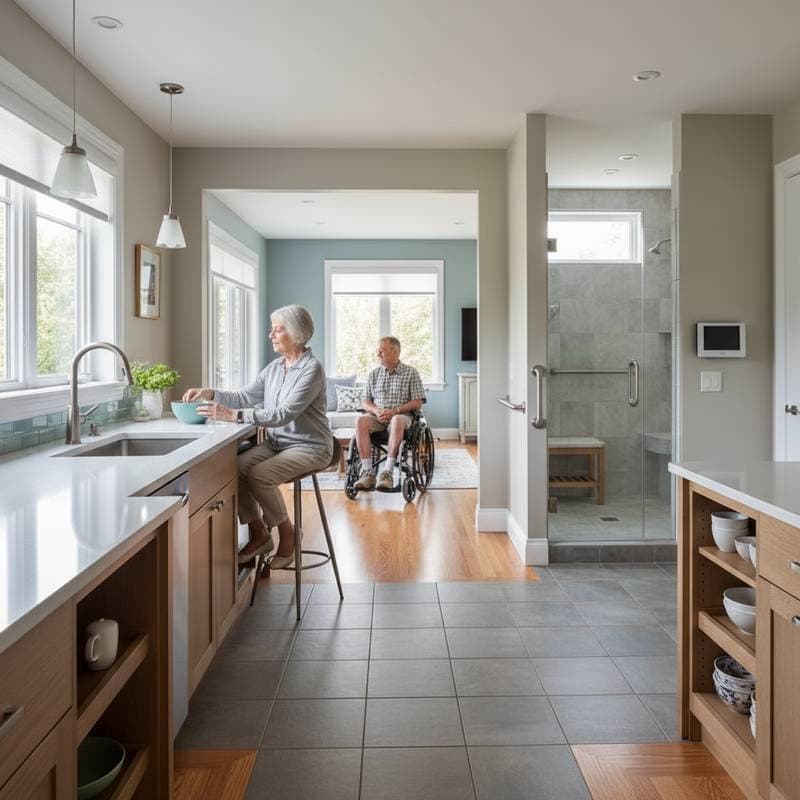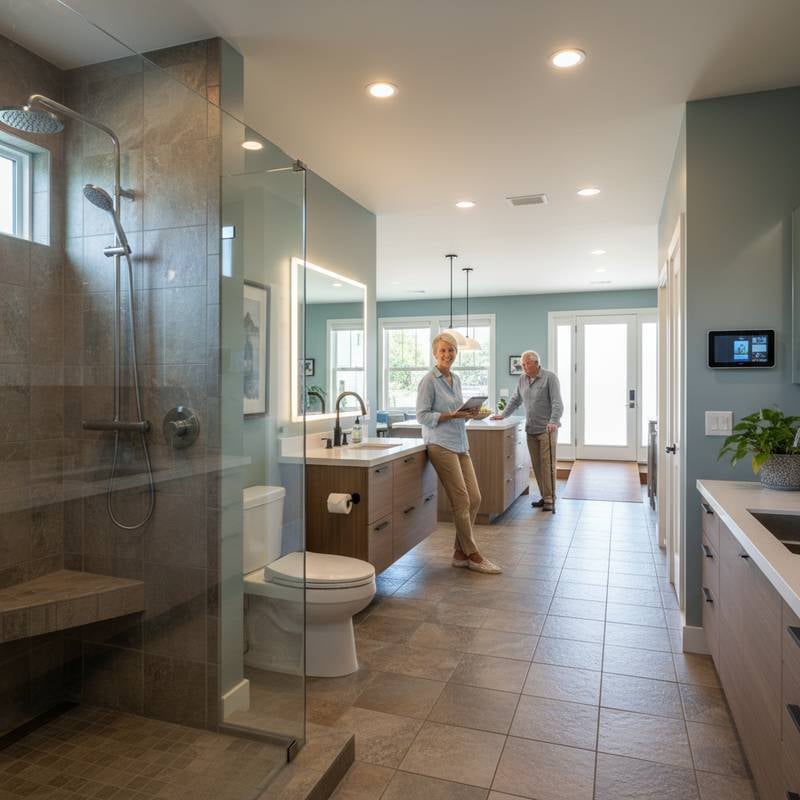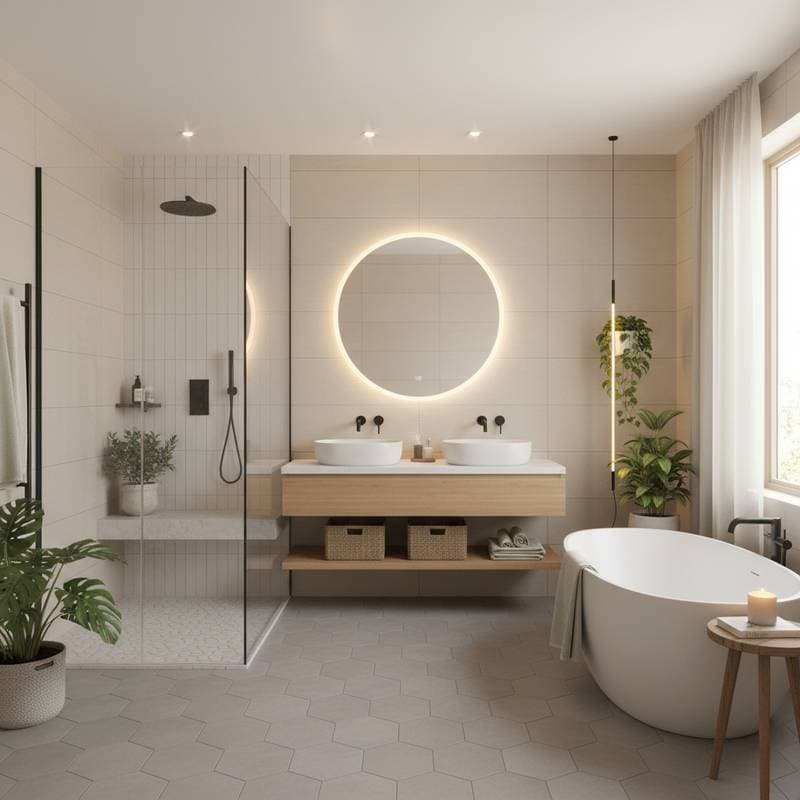Stay in Your Home Safely: Aging-in-Place Remodel Costs
Aging in place allows individuals to maintain independence while residing in their own homes as they grow older. This approach involves strategic home modifications that enhance safety and accessibility without requiring a move to assisted living facilities. Thoughtful remodeling not only supports physical needs but also preserves comfort and personal style.
Homeowners often face decisions about when and how to implement these changes. Costs can vary based on location, home size, and specific upgrades selected. Understanding these elements helps in planning a remodel that aligns with long-term goals.
Understanding Aging in Place
Aging in place refers to the design and modification of living spaces to accommodate changing mobility and health requirements over time. This concept emphasizes proactive adjustments rather than reactive fixes. By integrating universal design principles, homes become more inclusive for all ages and abilities.
Key benefits include reduced risk of falls, easier navigation for daily tasks, and increased property value. Professional assessments often identify potential hazards early, allowing for targeted improvements. These modifications promote emotional well-being by fostering a sense of security and familiarity.
Essential Remodeling Areas
Focus on high-impact zones where accidents frequently occur. Bathrooms, kitchens, and entryways demand priority attention due to their daily use and inherent risks. Each area requires specific features to ensure safe and efficient movement.
Accessible Bathrooms
Bathrooms present significant challenges with slippery surfaces and confined spaces. Installing grab bars near toilets and showers provides essential support for balance. Walk-in showers with low thresholds eliminate stepping hazards, while lever-style faucets simplify operation for those with limited dexterity.
Non-slip flooring and raised toilet seats further enhance usability. Consider adding a bench within the shower for seated bathing options. These upgrades transform a standard bathroom into a sanctuary that supports independence.
Functional Kitchens
Kitchens serve as the heart of the home, yet traditional layouts can hinder accessibility. Lower countertops and pull-out shelves bring essentials within reach, reducing the need to stretch or bend. Adjustable-height islands allow for versatile use, accommodating both standing and seated preparation.
Touchless faucets and soft-close cabinets minimize physical strain. Ample lighting under cabinets illuminates workspaces effectively. These changes make meal preparation safer and more enjoyable without sacrificing aesthetic appeal.
Secure Entryways
Entryways set the tone for safe home access. Widening doorways to at least 32 inches facilitates wheelchair passage if needed. Ramped thresholds replace steps, ensuring smooth transitions from outdoors.
Motion-sensor lighting activates automatically upon approach, preventing trips in low light. Sturdy handrails along pathways offer additional stability. These modifications create welcoming entrances that prioritize ease and security.
2025 Cost Estimates
Remodeling costs fluctuate with material choices, labor rates, and regional factors. National averages provide a starting point for budgeting, though local contractors offer precise quotes. Plan for a range that accounts for both basic and premium options.
Bathroom Remodels
A basic accessible bathroom update, including grab bars and non-slip flooring, typically ranges from $5,000 to $10,000. More comprehensive projects with walk-in showers and heated floors can cost $15,000 to $25,000. Labor constitutes about 40 percent of the total, with materials varying by quality.
Custom installations, such as zero-entry showers, push expenses toward the higher end. Energy-efficient fixtures may qualify for rebates, offsetting initial investments. Evaluate needs against budget to select appropriate features.
Kitchen Modifications
Entry-level kitchen adaptations, like adjustable counters and lever handles, fall between $8,000 and $15,000. Full overhauls incorporating smart appliances and universal design elements range from $20,000 to $40,000. Appliance upgrades alone can add $5,000 or more.
Open layouts improve flow but require structural adjustments, increasing costs. Durable, low-maintenance surfaces justify the expense through longevity. Consult designers to balance functionality with financial constraints.
Entryway Enhancements
Simple entryway improvements, such as ramps and wider doors, cost $2,000 to $5,000. Extensive work involving porch reconstructions or automated doors may reach $10,000 to $20,000. Site-specific challenges, like uneven terrain, influence pricing.
Permits and compliance with building codes add to the total. Prioritize high-traffic areas for maximum return on investment. These changes often yield quick safety improvements.
Budgeting Strategies
Effective budgeting begins with a detailed assessment of current home layout and personal requirements. Engage a certified aging-in-place specialist for an initial evaluation, which costs around $300 to $500 but saves money long-term. Prioritize modifications based on immediate needs versus future possibilities.
Allocate funds across categories: 50 percent for structural changes, 30 percent for fixtures, and 20 percent for contingencies. Explore financing options like home equity loans or government grants for accessibility projects. Track expenses with spreadsheets to maintain control.
Phased implementation spreads costs over time. Start with critical safety features, then add aesthetic enhancements. This approach ensures steady progress without overwhelming finances.
Expert Recommendations
Professionals emphasize integrating technology for enhanced independence. Smart home systems control lighting, temperature, and locks via voice commands, reducing physical effort. Motion-activated features prevent oversight in daily routines.
Select contractors experienced in universal design to avoid costly revisions. Review portfolios for similar projects and verify certifications. Clear communication during planning phases aligns expectations with outcomes.
Maintenance plays a crucial role post-remodel. Regular inspections of grab bars and flooring ensure ongoing safety. These habits extend the lifespan of modifications and protect investments.
Building a Lasting Home Legacy
Investing in aging-in-place remodels secures comfort and autonomy for years ahead. These upgrades not only address current needs but also enhance overall home value. Families benefit from spaces that adapt seamlessly to life's stages.
Consult local experts to tailor solutions to your unique situation. With careful planning, your home evolves into a supportive environment that nurtures well-being. Embrace these changes as steps toward a vibrant, independent future.










